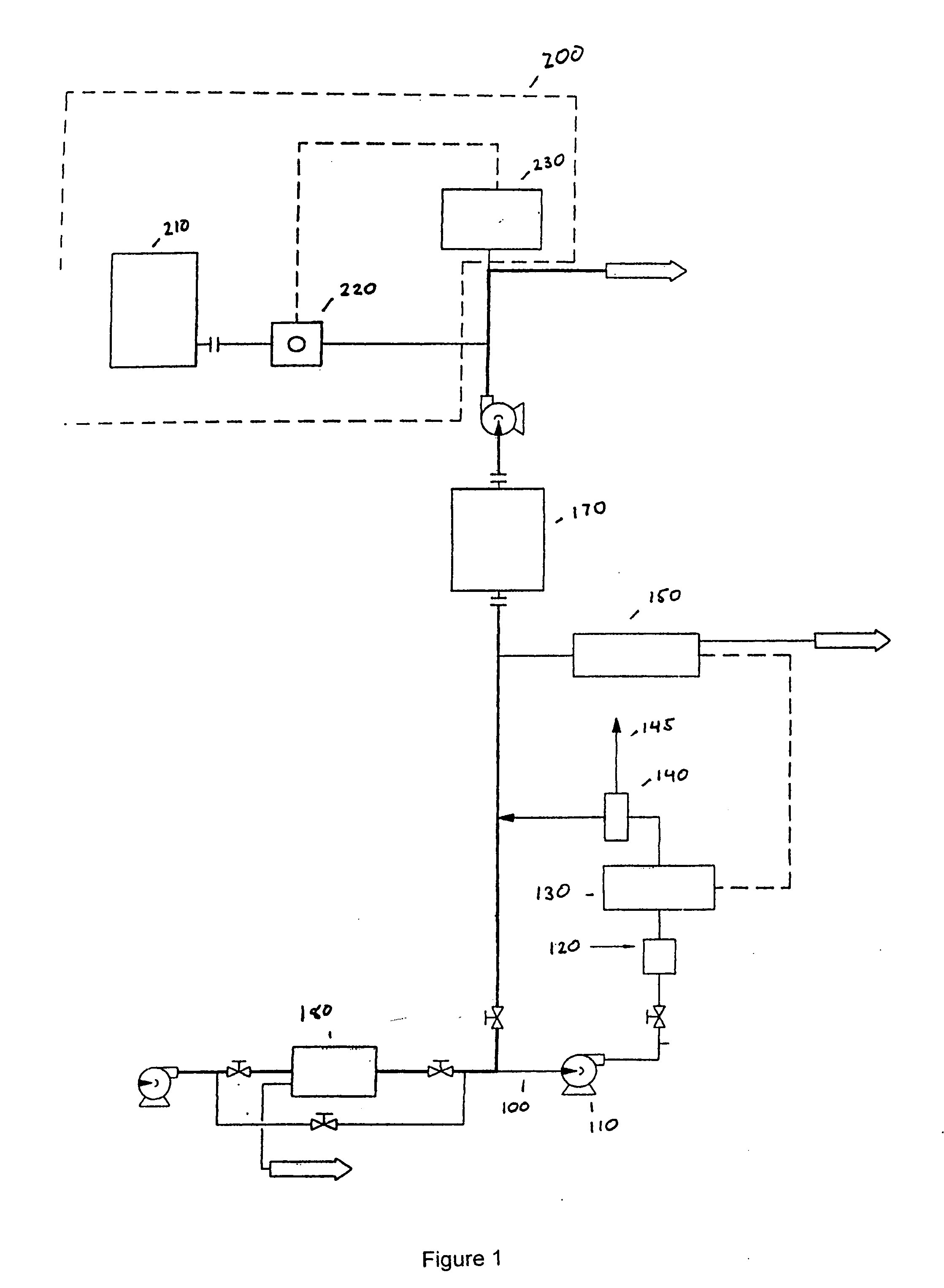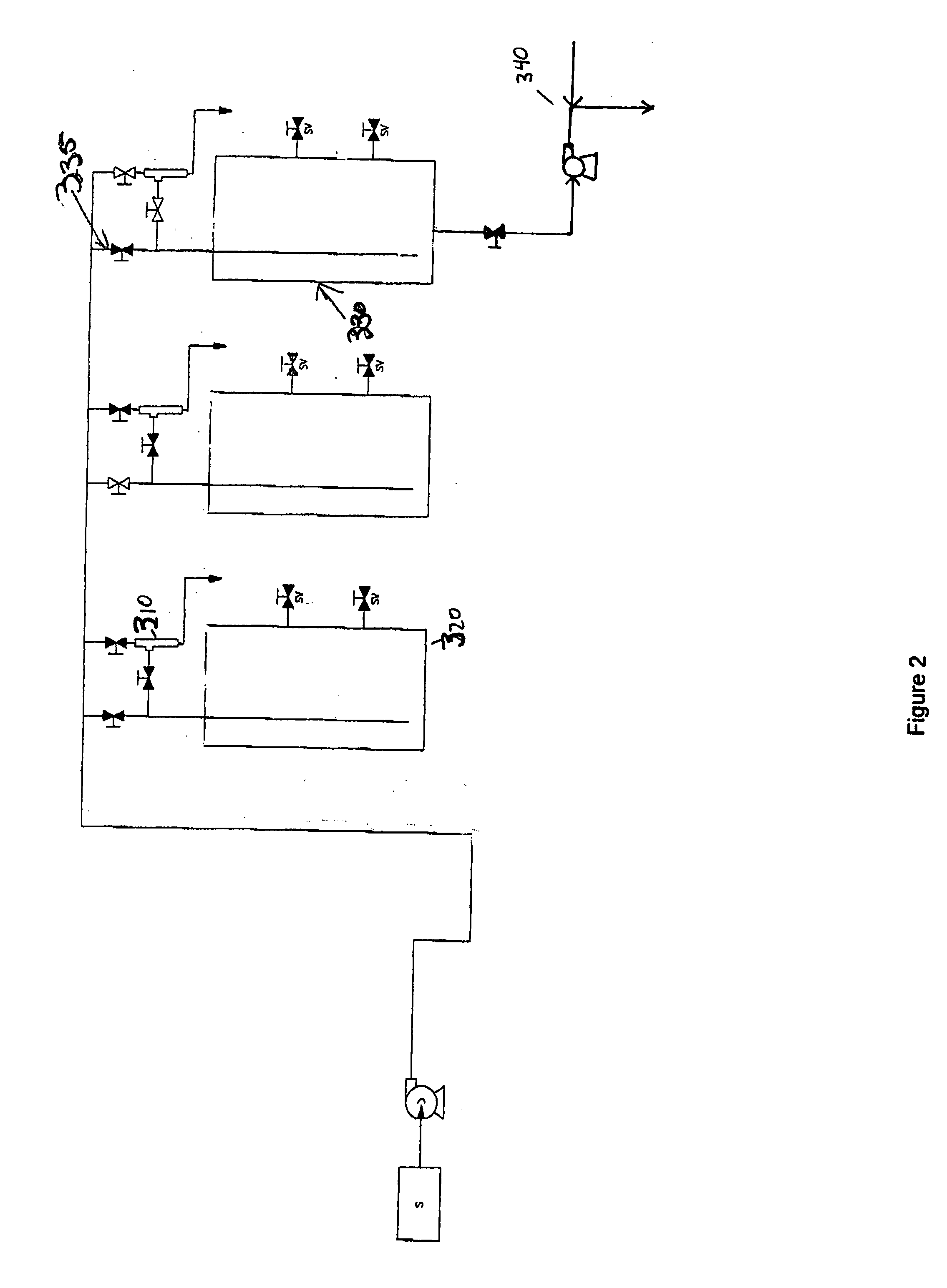System and method for treatment of ballast water
a ballast water and system technology, applied in the field of ballast water system and method, can solve the problems of releasing ballast water taken aboard from a distant location, affecting the native flora and fauna, and causing harm to the environment, so as to prevent outbreaks
- Summary
- Abstract
- Description
- Claims
- Application Information
AI Technical Summary
Benefits of technology
Problems solved by technology
Method used
Image
Examples
example 1
Results for Example 1
[0076] Total Residual Oxidant (TRO) levels declined steadily for the duration of the experiment. (FIG. 3). TRO in the nonfiltered test tanks dropped more than the filtered test tanks in the first 5 hours and then the TRO dissipated equally for the remaining time points.
[0077] Bacteria were greatly reduced in both treatments and showed minimal rebound over the 10 days of the experiment. There was a slight rebound of bacteria in the treatment without filtration.
[0078] Chlorophyll a is an indicator of phytoplankton. In the treated seawater, Chlorophyll a levels were at or below the detection limit starting with the 5-hour time point and continued to drop for both of the treatments
[0079] In the control tanks, chlorophyll a levels declined over the duration of the experiment, likely due to the absence of light since all of the mesocosms were covered.
[0080] After the first treatment trial it was concluded that no statistical difference could be found between the t...
example 2
Sodium Hypochlorite Mesocosm October 2004
[0081] The second test of the sodium hypochlorite generator / filtration treatment system was started on Oct. 12, 2004. Two experiments were performed. The first experiment compared two treatments, filtration / chlorination (˜1.0 mg Cl2 / L) versus filtration only. The second experiment compared a chlorination dose of 1.0 mg Cl2 / L with a dose of 1.6 mg Cl2 / L. Each experiment included 4 mesocosms per treatment and 4 control tanks. The mesocosms were analyzed for Total Residual Oxidant (TRO) (mg Cl2 / L), culturable heterotrophic bacteria, chlorophyll a, and zooplankton at 5, 24, 48, and 240 hours following treatment. Culturable phytoplankton was enumerated in the first experiment. Samples were also collected at 5 hours for nutrient and total organic carbon (TOC) analysis. The temperature in the mesocosms fluctuated between 12.0° C. and 14.0° C.
Procedure
[0082] The procedure for Example 2 was the similar to the procedure used in Example 1 except for...
PUM
| Property | Measurement | Unit |
|---|---|---|
| diameter | aaaaa | aaaaa |
| time | aaaaa | aaaaa |
| temperature | aaaaa | aaaaa |
Abstract
Description
Claims
Application Information
 Login to View More
Login to View More - R&D
- Intellectual Property
- Life Sciences
- Materials
- Tech Scout
- Unparalleled Data Quality
- Higher Quality Content
- 60% Fewer Hallucinations
Browse by: Latest US Patents, China's latest patents, Technical Efficacy Thesaurus, Application Domain, Technology Topic, Popular Technical Reports.
© 2025 PatSnap. All rights reserved.Legal|Privacy policy|Modern Slavery Act Transparency Statement|Sitemap|About US| Contact US: help@patsnap.com



